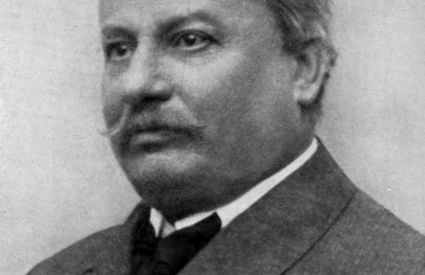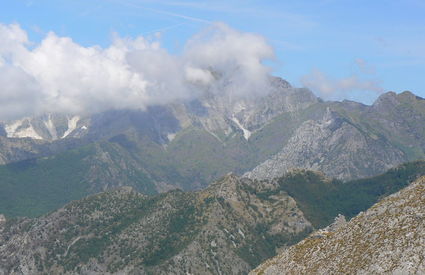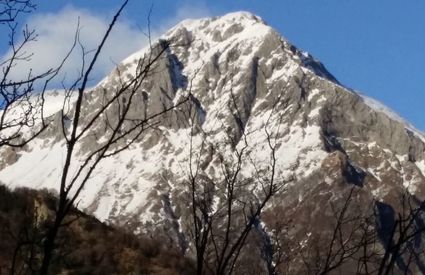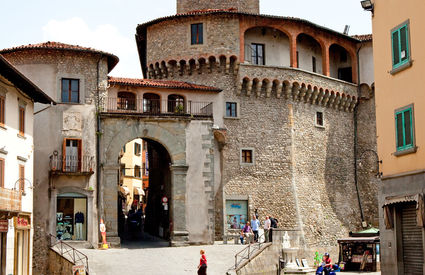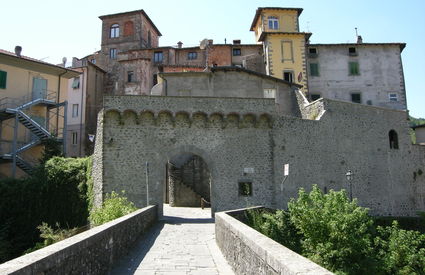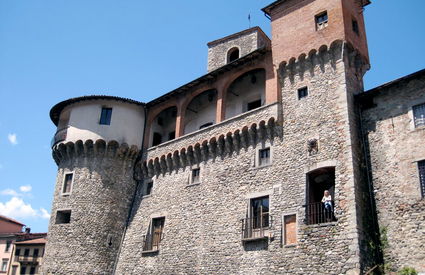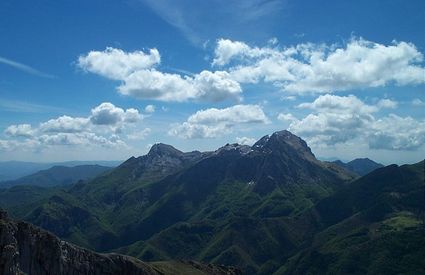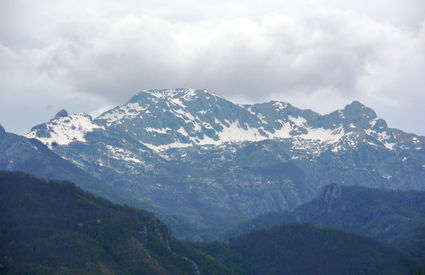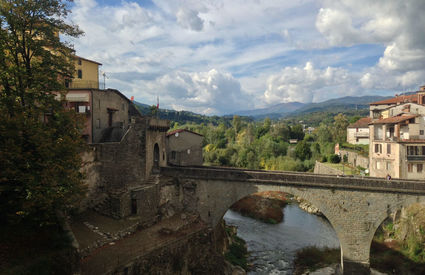Castelnuovo di Garfagnana
A petulant poet and a sullen population
Ludovico Ariosto’s three years in Garfagnana: poetry and punishment
A petulant poet and a sullen population
Ludovico Ariosto’s three years in Garfagnana: poetry and punishment
Poeti
It’s fascinating to note how different poets have spoken of the mountains encircling our valleys through
the centuries. In his Canti di
Castelvecchio, Giovanni Pascoli described
them like this:
In the fog
floating up from the sonorous
Serchio, the Pania stands tall, a façade
of calm: a sharp golden block,
where withering
rose petals
rain down. I, who love this old mountain,
talk to it at dawn each day, sharing with it
many sweet nothings […]
Speaking of the very same panorama centuries prior, Ludovico Ariosto used more somber, almost Dantean tones:
The stark
Pania between the Aurora and the Noto
keeps me isolated via the yoke that holds me in.
A yoke that brings this Pilgrim glory.
This is
a trench, where I live, a deep one;
I move
not a foot without climbing
the proud border of these wooded Apennines.
How is it that
this same scenery sparks such detached feelings?
Ariosto, Governor of Garfagnana
More than in the landscapes, the answer can be found in the motivations of the poets, as it can in their biographies. Pascoli took refuge in these mountains, and built his nido here—the warm familial environment that is such a theme of his poetry. Ariosto, on the other hand, was sent to Castelnuovo as Governor, forcing him away from both from his home city and his love, Alessandra Benucci.
The poet held the role of ducal commissioner from February 1522 until June 1525, at a difficult juncture, during
which a mere dozen crossbowmen were
guaranteed to Ariosto. This was hardly a sufficient group for this area, a land
he described as being infested with bandits.
And this was why Ariosto, from his general headquarters in Castelnuovo, in the estate that today bears his name, circulated tough messages with the aim of enforcing the rule of law in an unfriendly and indomitable area.
Battle cries
Regarding the drawing of weapons
At the behest of the Magnificent Noble Commissioner Count
Ludovico Ariosto, Ducal Commissioner of the Garfagnana, it is hereby
established that each time there are conflicts, arguments, fights or general
tumult, in Calcinaia or other areas of the Castelnuovo territory, no one is
entitled to the use of weapons, with the exception of our illustrious Count
Ariosto’s appointed crossbowmen. Whosoever is found to have drawn weapons,
whether swords or daggers, will have to immediately pay a fine of 25 ducats,
two thirds of which will go directly to the Ducal Chamber, with the other third
distributed to the party making the report. Anyone unable to pay will be
punished with the “cord treatment” (or more precisely, the guilty party will be
subjected to a rope attached via the wrists, which will then be tugged in an
unforgiving manner, stretching out his arms, ed. note).
On this 14th day of October, 1522
Regarding the assassination of outlaws
So that no one may claim ignorance, with this new announcement we once again proclaim, on behalf of the Magnificent Noble General Commissioner of the Garfagnana region, that any outlaw or convicted party who kills another outlaw will be pardoned, with none of the enemies who previously accused him able to intervene in any way. As part of the provisions of the pardon, he will additionally be issued a pass permitting him to live in this province. If instead the person killing a bandit was not previously a bandit or a convict of any kind, he can obtain a pardon for anyone he names, provided that person is not an insurgent or assassin.
On this 3rd day of March, 1524



